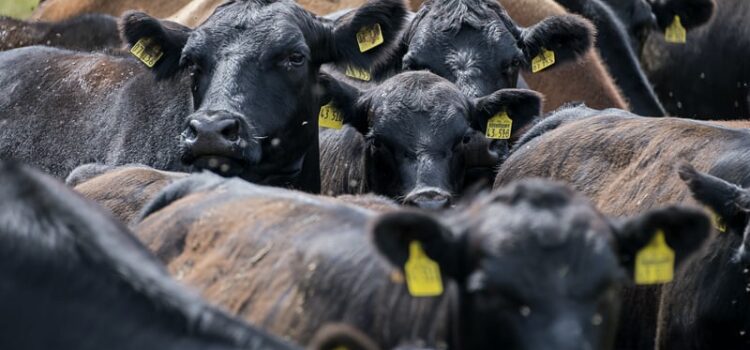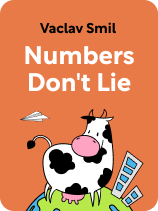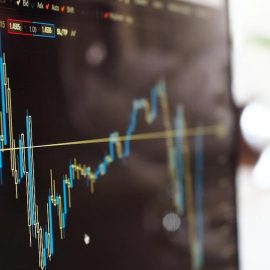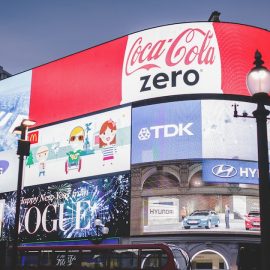

This article is an excerpt from the Shortform book guide to "Numbers Don't Lie" by Vaclav Smil. Shortform has the world's best summaries and analyses of books you should be reading.
Like this article? Sign up for a free trial here.
How does the food production industry contribute to climate change? What are some ways we can offset the CO2 emissions resulting from food production?
Food production plays a huge role in climate change, and as the global population continues to rise, we must make changes in the way we produce and consume food. Specifically, we should reduce our reliance on nitrogen fertilizers, tackle food waste, and limit meat consumption.
Here’s a look at food production’s carbon footprint in these areas.
Nitrogen Fertilizers Are Harmful
Smil argues that the use of synthetic nitrogen fertilizers impacts the environment in two major ways: It adds to greenhouse gas emissions, and it causes nitrogen to be removed from the soil. Crops need nitrogen, and the traditional ways farmers supplied nitrogen to crops (recycling organic materials and rotating crops) are no longer adequate as the population now reaches close to 8 billion people. To provide nitrogen to crops, we synthesize almost 150 million tons of ammonium a year to make fertilizers, a process that’s environmentally harmful.
Let’s look in more detail at fertilizers’ impact on greenhouse gas emissions and soil nitrogen.
Nitrogen Fertilizers Emit Greenhouse Gases. Though carbon dioxide contributes the most to the heating of the Earth, Smil points out that the next largest contributors are methane and nitrous oxide. The production and use of nitrogenous fertilizers add all three of these gases to the atmosphere. The synthesis of ammonia requires a lot of energy, usually provided by the burning of coal, which emits carbon dioxide, or natural gas, which in turn emits methane. The use of fertilizers also adds nitrous oxide to the atmosphere. Altogether, synthetic nitrogen fertilizers are estimated to account for about 1% of global greenhouse gas emissions.
Nitrogen Fertilizers Lead to Nitrogen Loss. According to Smil, nitrogen fertilizers also contribute greatly to nitrogen loss, which affects crop yields and makes us more dependent on synthetic nitrogen. Nitrogen loss happens when the nitrogen naturally found within the soil decreases. As more and more nitrogen is removed from the soil, crop yields become smaller, which could lead to widespread hunger and famine. Because of this, farmers will have to increase their use of synthetic nitrogen fertilizers, further adding to the problem.
To avoid this vicious cycle, we must find a way to reduce the use of nitrogen fertilizers, whether through increased fertilizer efficiency or a more sustainable, natural supply of nitrogen.
Food Waste Exhausts Labor and Energy and Harms the Environment
Smil argues that reducing global food waste would greatly benefit the environment. The amount of food humans waste is massive. According to the UN, at least a third of all harvested food is wasted. The biggest contributor is the United States, with over 40% of food going to waste—an amount that would be enough to feed about 230 million people annually.
Further, when we waste food, we also waste a great deal of labor and energy while furthering the damage to the environment. If we wasted less food, we’d have less soil erosion, nitrogen loss, and greenhouse gas emissions.
(Shortform note: A Finnish study from 2012 evaluated the impact of food waste on a global scale. Globally, an estimated 614 calories per person are wasted every day. For every person on the planet, we waste around 27 cubic meters of water, 300 square meters of land, and 4 kilograms of fertilizer each year. If we just halved the amount of food waste, we could feed up to a billion more people each year and drastically reduce our use of the planet’s natural resources.)
Meat Production Requires a Huge Amount of Crops to Feed Livestock
Another change Smil advocates that could help reduce the carbon footprint from food production is limiting the consumption of meat, especially beef. Reducing all meat consumption would be helpful, but we could make a substantial impact just by eating more chicken and less beef.
One of the main reasons meat is bad for the environment is because of the amount of crops required to feed animals. In North America and Europe, approximately 60% of the total crop harvest is used for feeding livestock. Cows, in particular, require a lot of feed for the amount of meat they provide. Chickens require less than a third of the amount of feed to provide the same amount of edible meat.
(Shortform note: In 2014, a team from the Weizmann Institute of Science compared the environmental costs of the most popular livestock-based foods (beef, pork, poultry, dairy, and eggs). The main takeaway from the study confirms Smil’s argument: that beef has by far the largest environmental impact. Compared with poultry, beef requires about 28 times more land, 11 times more water, 6 times more nitrogen, and releases 5 times the amount of greenhouse gases. The study also found that pork, poultry, eggs, and dairy have relatively similar environmental impacts.)

———End of Preview———
Like what you just read? Read the rest of the world's best book summary and analysis of Vaclav Smil's "Numbers Don't Lie" at Shortform.
Here's what you'll find in our full Numbers Don't Lie summary:
- How you can understand the world by understanding numbers and statistics
- Why the infant mortality rate is a better indicator of standard of living than GDP per capita
- Why nuclear energy is not the answer to sustainability






